We’ve all been there—you’re freshening up a room with the perfect shade of paint, and you accidentally bump the wall with your elbow. Or worse, you lean against the entire thing, and you’re left with a huge smear of color on your shirt.
Suddenly, the perfects watch you selected for a peaceful ambiance is now a huge hassle, and now you have to put an already time-consuming process on hold to deal with the stains.
Or maybe you’re working on a skilled art project, and you’re prone to getting a few smudges here and there. Your masterpiece might turn out beautiful, but you don’t want to have to compromise your clothing along the way! Whatever the situation, you’ll be wondering the same thing: how do you get paint out of these clothes?
If you’re careful, a paint stain doesn’t have to be a permanent accident. However, some cases are a little more complex to remove than others. Before you get carried away with renovating your living room or completing your next art project, make sure you’re prepared in case the unfortunate possibility arises.
Step 1: Know Your Paint
There are a variety of different paints out there, and they will each require their own proper cleanup method.

The paint you use on your walls will be different than the ones you use for arts and crafts, so one solution won’t be right for every situation. In order to be better prepared to get paint out of your clothes, let’s take a look at the different types.
Acrylic Paints
Acrylic paints are chemical-based, which allow them to have more elasticity than other options. This flexibility means that it can hold up well in temperature fluctuations, weather changes, or changes in moisture. These are also a common type of paint used for art and craft projects.
Latex and Water-Based Paints
Water or latex paints are the most common, and are the kind often used on interior surfaces like walls and ceilings that don’t receive a lot of contact. It’s easy to apply and dries quickly, but it can be a little more prone to peeling. Luckily, these paints are commonly easier to remove!
Oil-Based Paints
Just as it sounds, oil-based paints are made with natural or synthetic oils. The drying time is much longer than water-based options, but they are much more durable.
That’s why these paints are commonly used on high-traffic surfaces, like floors, trim, or furniture, but they’re also a common specialty art paint that provides a beautiful, glossy finish. Cleanup for this type of paint definitely requires a bit more attention.
Step 2: Work Smarter, Not Harder
A key first step to getting paint out of clothes is to act fast. Instead of ignoring the mess and putting it aside for later, put your home reno on hold and focus on cleanup.
The second you notice that you’ve ended up with a stain, take off the item while making sure not to spread any of the paint to other areas of the garment. If you let the paint dry, it will solidify into the fibers, making it much more difficult to remove.
The Dish Soap Method
While the paint is still wet, the first thing to do is make a trip to the sink. If necessary, scoop off any excess paint that might be sitting on top of the affected area. This helps lower to possibility of paint being spread further across the fabric. Then, make sure you have warm water ready to wash the stain.
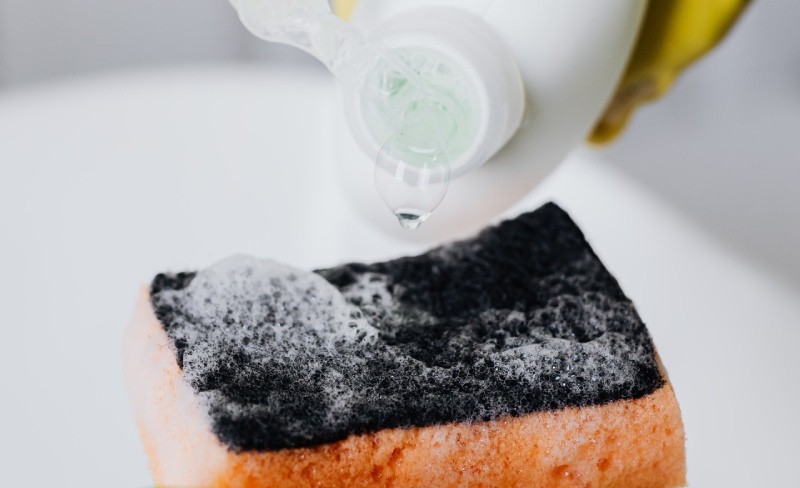
If your stain is from acrylic paint, you want to first rinse the area with warm, running water. Then, with a mixture made up of half water and half liquid dish soap, use it to sponge the stain. Keep dabbing up and down, being careful not to scrub too vigorously and wear down the garment. The paint should begin to lift from the fabric.
When the stain is removed, rinse thoroughly, and then you can throw your clothing item in the wash as usual. If your stain is from latex or water-based paint, you can use this same method for removal, but try working from the back of the fabric instead.
The Rubbing Alcohol Method
Rubbing alcohol can actually be a great ingredient for removing paint from clothes and other fabric. For this method, you also want to begin by saturating the area with warm water. Then soak a rag, cotton ball, or toothbrush with rubbing alcohol and use it to scrub away at the stain.
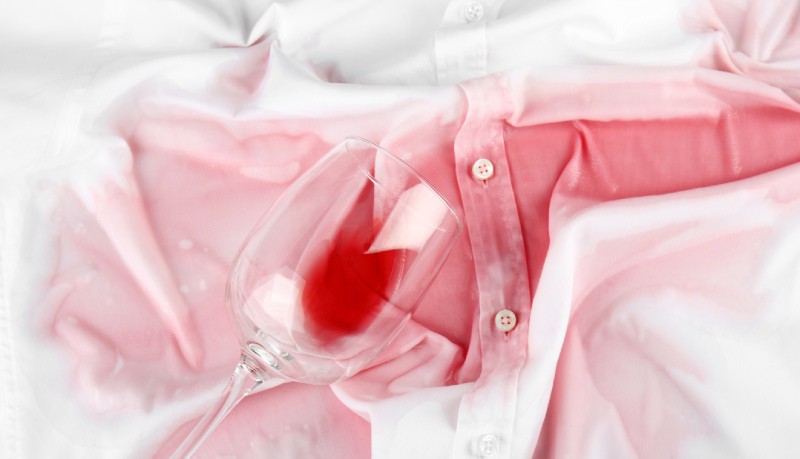
Continue flushing the area with warm water throughout the scrubbing process. When enough of the stain has been removed, rinse the area once again and machine wash your garment. You can also use acetone with this method, but be sure that your specific clothing fabric doesn’t contain acetate or triacetate, because it can melt those fibers!
This technique works great with stains from acrylic paint, but be sure to do a spot test before going directly to the problem area. You want to be sure that the rubbing alcohol won’t damage the fabric or bleed the color. A seam allowance or back collar are some inconspicuous areas to test out the solution.
The Vinegar and Ammonia Method
With this technique, you’ll need to mix a solution of one part salt, two parts white vinegar, and two parts ammonia. Just like before, you can use a rag or toothbrush to scrub the mixture into the stain. While scrubbing, be careful not to stray too far outside of the affected area, because it could transfer the lifted paint further.
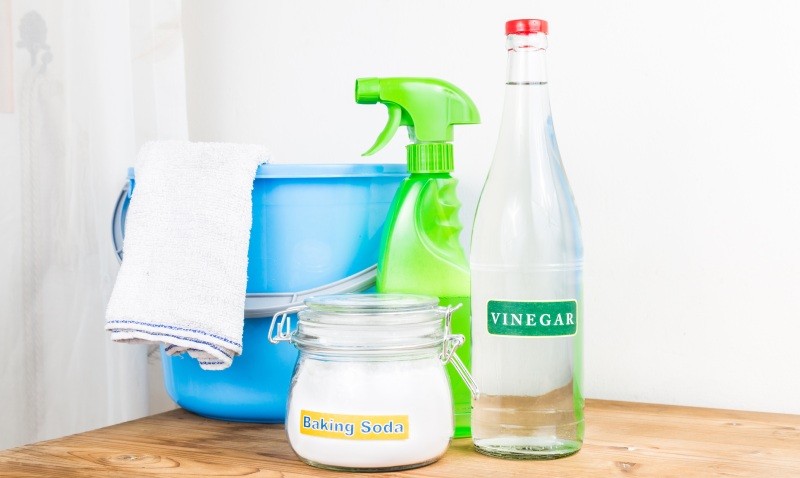
Continue to rinse the stain as you go with warm water, and when you’re satisfied with the results, you can then machine wash your garment.
Removing Dried Paint From Clothes
Sometimes while painting, we get carried away and just don’t notice the big stain on our sleeve right away. Getting dried paint out of clothes is a little more difficult than when it’s wet, but it’s not always impossible. It’s always worth a try!
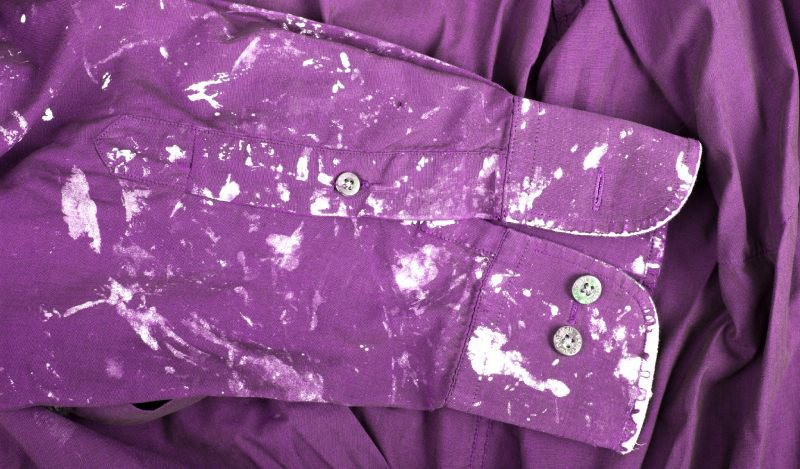
First, scrape off any loose, dried paint from the garment. However, you don’t want to pick at the paint too intensely, as it can tug at the fabric and permanently stretch the fibers.
Make a solution of one part warm water to one part laundry detergent, and soak the affected area with the mixture. As the paint starts to soften up, use a rag to blot the area aggressively. The stain should begin to break down, but if it’s being stubborn, you can try following it with the techniques above.
Removing Oil-Based Paint From Clothes
If your stain is from an oil-based paint, it can be a bit more difficult to remove. Begin by quickly blotting the area with a dry towel to remove as much of the paint as possible, and then rinse the affected area with water. Next, create a padding underneath the garment with clean paper towels or rags, and lay the fabric face-down on top.
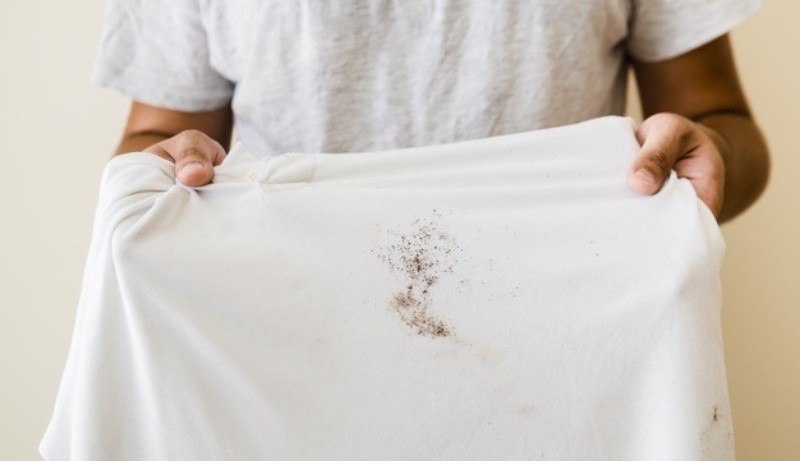
Here, you can now blot the area with turpentine or paint thinner, but be careful! Make sure to read the labels to ensure that you’re using the correct product—some can damage delicate or synthetic fabrics.Some paint containers will list a recommended brand of paint thinner.
Continue to blot the fabric until the paint is no longer lifting. You can then apply some liquid dish soap and leave the area to soak. Then, rinse again and launder the garment as usual.
Although most of these methods are pretty gentle, there’s still a possibility that spot cleaning could accidentally damage your fabric. All fabrics are unique, and each will require different methods of care.
Always make sure to do a spot test on your fabric before getting carried away and to make sure you aren’t risking any permanent damage. Delicate fabrics like silk will chafe if rubbed instead of blotted, while others could fade if using the wrong solutions.
Step 3: Leave It to the Pros
If all else fails, you can always rely on a laundry service or dry cleaning service to help you out. After all, that’s what they’re here for! Besides, some fabrics can be extremely delicate or difficult to clean, so it’s better left in the hands of a professional.

When a stubborn stain prevails, a laundry or dry cleaning service will treat it with the proper care—and if your garment label says “dry clean only,” then that’s your best bet. You’ll thank them later.
With all that in mind, it’s always important to be delicate with your clothing as too much aggression and friction when washing can easily damage the fabric. Also, don’t get carried away with any crazy washing techniques without researching it first.
It’s always a good idea to wear an old t-shirt or apron that you don’t mind getting dirty while painting, so you can be comfortable knowing a nice clothing item won’t get ruined. Next time you break out the paint and can’t help but get a little messy, refer back to this guide and you’ll get that paint out of your clothes in no time!

